CarEdge saved me over 4,500 dollars on a brand new Honda Pilot. I can't say thank you enough.
Price intelligence
Find a wide range of vehicle listings with market insights on new and used listings near you.


Help us personalize your CarEdge experience — it only takes a second.
Your answers help us personalize your CarEdge journey — we’ll follow up with tips and next steps that match your buying timeline.

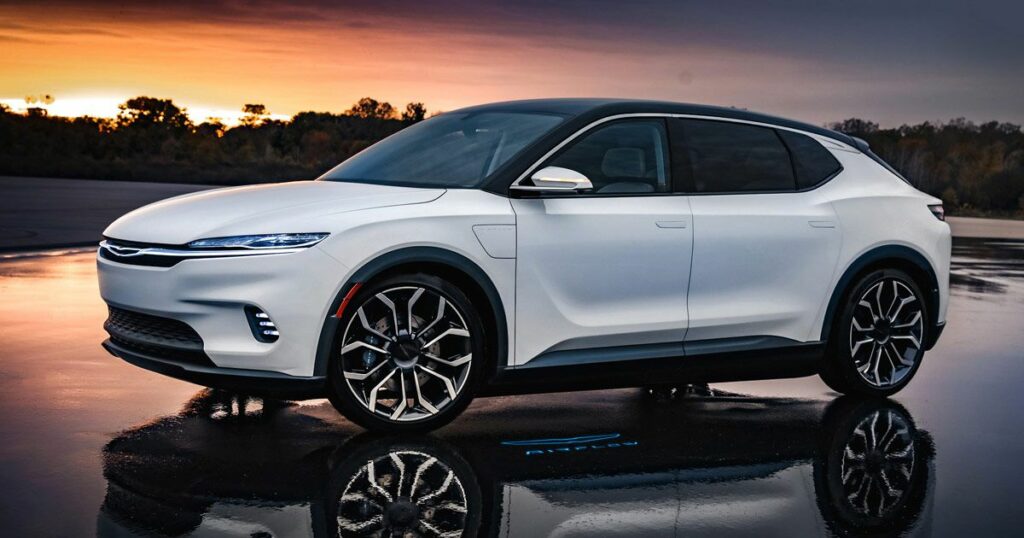
CES 2022 was marked by innovations in the metaverse, NFTs, crypto, and sustainability. But many of the greatest headlines from CES 2022 were in the arena of automotive news. Here are five stories that stood out from automakers that brought their best and brightest.
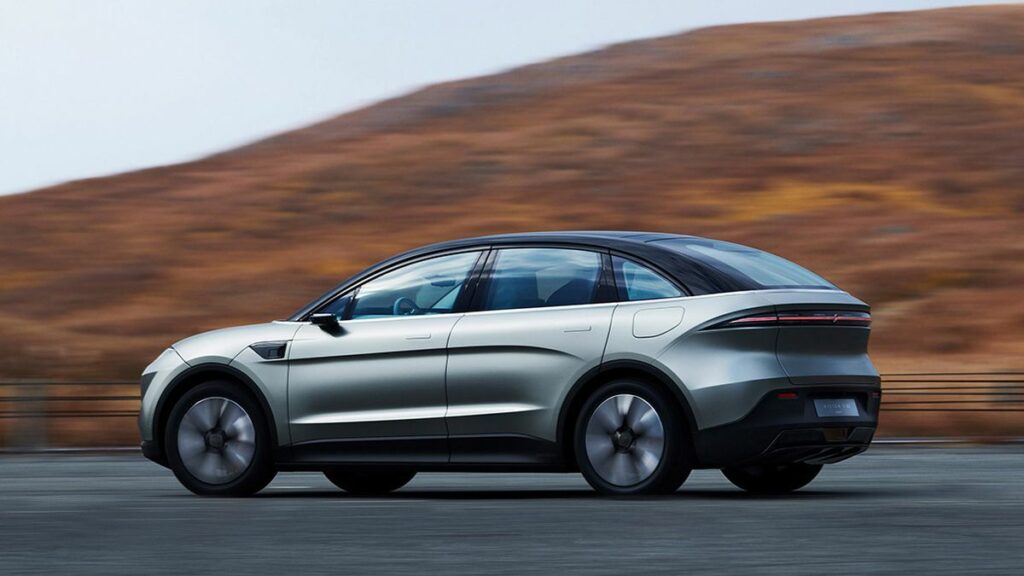
At CES 2020, Sony announced “VISION-S,” an initiative to bring Sony’s tech know-how into the world of mobility. There was a prototype sedan on display, and it was all the rage among automotive and PlayStation enthusiasts. Sony secretly started public road testing in Europe in December of the same year, and has now shared that they were conducting a number of driver experience tests featuring their cutting-edge vehicle technology platform under development.
Two years after kindling their own automotive rumors, Sony CEO Kenichiro Yoshida confirmed the establishment of Sony Mobility at CES 2022. During the announcement, Sony unveiled Vision-S 02, an electric crossover prototype, but offered no specific details about pricing or release dates. With the electric vehicle space getting more and more crowded as legacy OEMs and startups alike unveil their EV plans, Sony must be quite confident that they have something special to bring to the table as they launch Sony Mobility. We’ll be following this one closely.

Arguably the biggest headline out of CES 2022 was the full unveiling of the 2024 Chevrolet Silverado EV. With up to 400 miles of range, powerful performance and both luxury and work-oriented trims, the 2024 Silverado EV is positioned to fiercely compete with the F-150 Lightning and Rivian R1T. Who knows, maybe the Tesla CyberTruck will be trickling out of Tesla’s Gigafactory by the time the Silverado EV arrives in customer hands starting in 2023.
Electric vehicles are still expensive. Until prices come down, most consumers won’t be considering going electric for their next purchase. That’s why Chevrolet’s announcement of a $30,000 electric Equinox is a big deal for the whole industry. Coming in 2023, the Equinox EV will be based on GM’s highly-efficient and affordable Ultium platform.
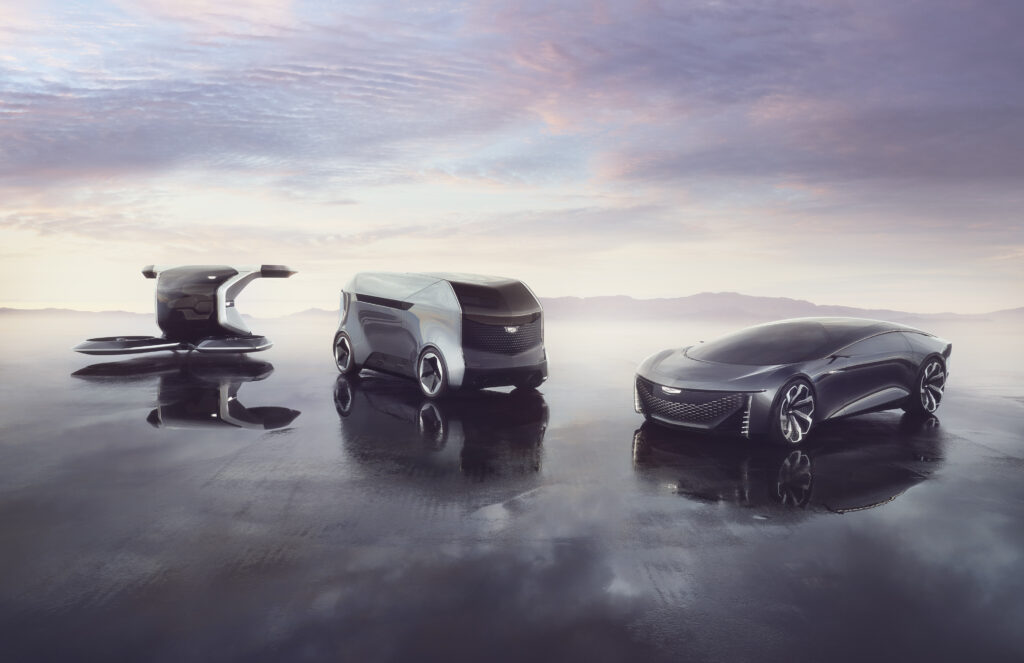
Cadillac is slated to become the first GM brand to go all electric by 2030. The 2023 Cadillac Lyriq will be the first electric Cadillac to arrive at dealerships later this year, and it’s one beautiful luxury crossover. However, it turns out the Cadillac has even more ambitious plans on the table.
At CES, Cadillac introduced the funky and far-out InnerSpace concept. The InnerSpace ‘design experience,’ as Cadillac puts it, is the latest addition to their Halo Concept Portfolio. The InnerSpace is a two-passenger autonomous electric luxury concept vehicle that features nearly 360-degree panoramic views, massive LED displays with integrated augmented reality, and ‘wellness recovery’ features. It sure is something to think about.
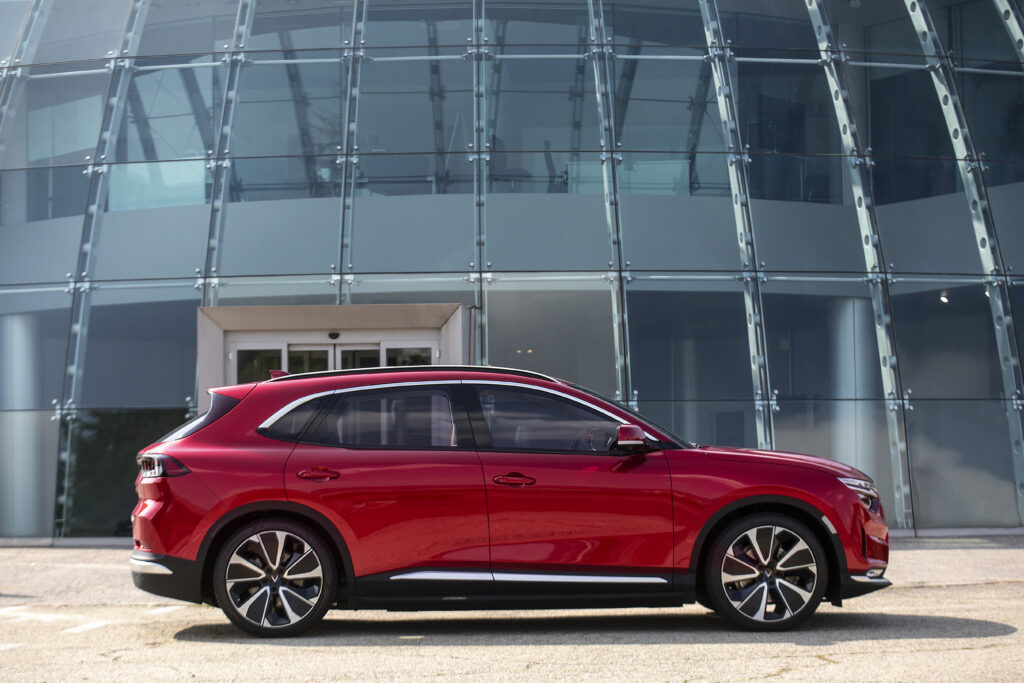
VinFast has been taking the EV scene by storm. Part of their sudden popularity is probably due to the EV stock craze, but some of the attention is because of the different and controversial approach the Vietnamese startup is taking for power supply. VinFast says it will lease batteries to customers rather than including them as standard equipment. They likely took inspiration from Chinese electric automaker Nio’s success with battery swapping, but at least batteries come with their vehicles.
Also at CES 2022, VinFast shared prototypes of their upcoming electric SUVs, the VF-8 and VF-9. VinFast already began deliveries of its first electric SUV in Vietnam last year. It intends to deliver six EVs to international markets by mid-2023.
At CES, the company shared pricing for two models that are nearing production. The midsized VF 8 SUV will start at $41,000. The three-row VF 9 will start at $56,000. However, there’s a big catch. Those prices are without the battery! We’ll see how North American consumers feel about buying an EV without its most essential component.

Talk about ambition! In 2022, Chrysler has zero electric vehicles for sale. In fact, it doesn’t intend to sell any EVs until 2025. No big deal, right? What if I told you that by 2028, Chrysler plans to be 100% electric? As crazy as that sounds, that’s exactly the plan that Stellantis shared with us at CES 2022. From the looks of it, they do have a promising EV in the works.
The 2025 Chrysler Airflow is a sleek electric sedan concept that may be closer to production than it seems. The automaker calls it a technology-forward design optimized for efficiency and driver experience. The Airflow integrates leading-edge drive-system technology with intuitive AI and connected vehicle technology that delivers 350- to 400-mile range. They also say it includes the new “STLA SmartCockpit, powered by STLA Brain, that enables an extension of digital, work and home environments, all in sync to create a personalized experience for every passenger.”
Chrysler also says that the Airflow will include STLA AutoDrive, a Level 3 autonomous driving system. That’s a bold claim considering that even the best driver assistance systems today are Level 2, requiring active monitoring at all times. The upcoming Chrysler EVs will also be upgradable via over-the-air (OTA) software updates.
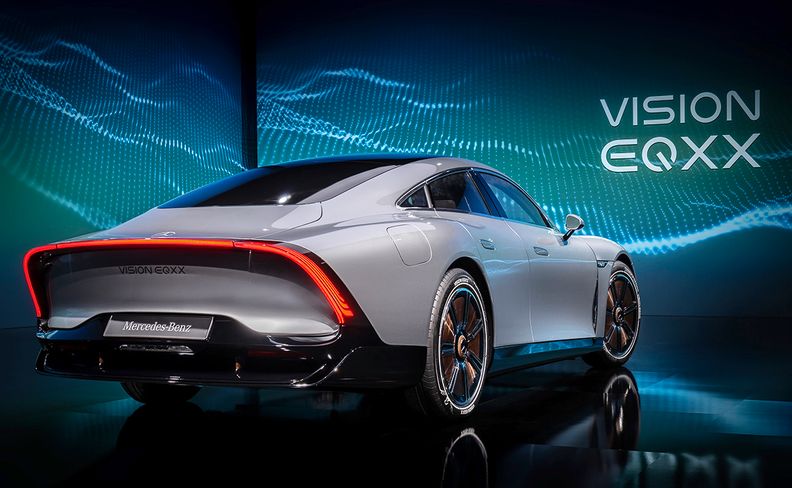
As of 2022, the best long-range EVs on the market offer 400-500 miles of range on a single charge. Notably, the Lucid Air, Tesla Model S and brand-new Mercedes EQS are capable of going the distance. Now, Mercedes-Benz says it is aiming to bring an electric vehicle with more than 620 miles of range to the market by 2024.
The Vision EQXX concept is “more than just a car, it’s a technology program,” according to Mercedes-Benz Chief Technology Officer Markus Schäfer. The next-generation of Mercedes EVs will feature redesigned battery architecture that includes more silicon to increase energy density without making the battery any larger. If you’re in the market for a long-range luxury Mercedes, the German automaker has big plans for taking electric luxury to new heights.
You may have noticed something about the automotive headlines out of CES 2022: the golden era of EVs appears to be upon us. The roaring ‘20s are turning out to be the whirring ‘20s as electric motors make their way into seemingly every new auto. Whether consumers and infrastructure are ready or not, OEM investments in electrification seem unstoppable at this point. What do you think? Are you excited for what’s to come? Or do you see trouble on the horizon? We’ll keep you up to date as the industry transforms like never before.
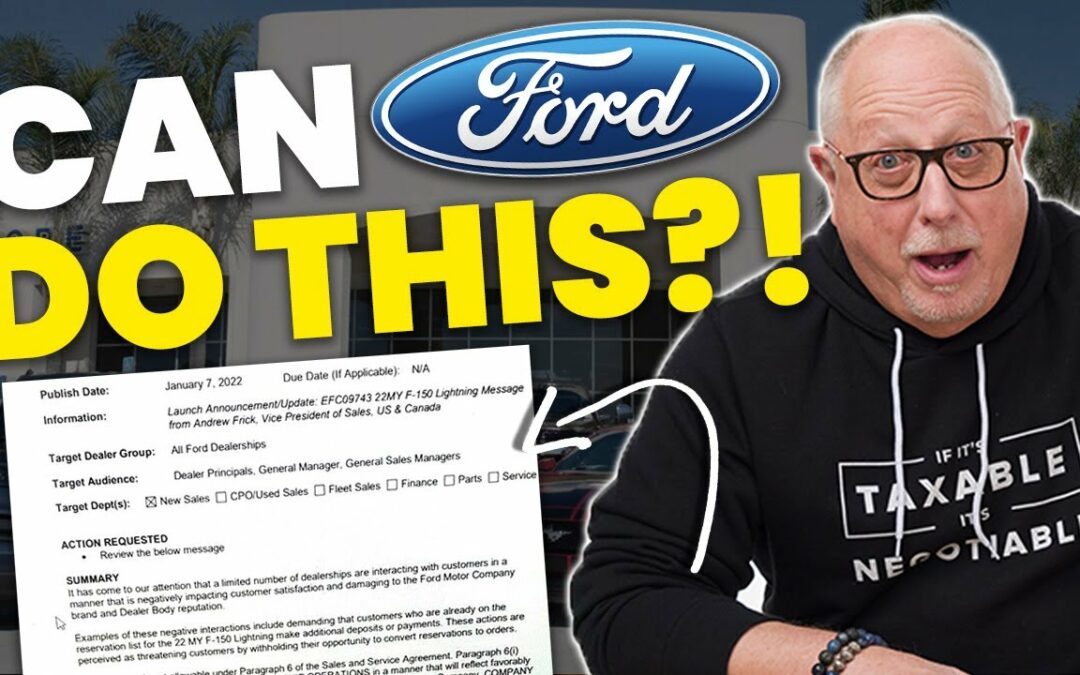
It goes without saying that the Ford F-150 Lightning is one of the hottest new electric trucks to hit the market in 2022. With over 200,000 reservations and a groundswell of support to produce more EV trucks, Ford appears to be “all-in” on the F-150 Lightning. So much so that Ford is beginning to play a bit of hardball with their dealers and their customers, unlike anything we’ve ever seen before.
👉 A memo sent from Ford corporate to their dealers was recently leaked online, and from it we learned a lot about how the legacy automaker is thinking about the release of the F-150 Lightning. “It has come to our attention that a limited number of dealerships are interacting with customers in a manner that is negatively impacting customer satisfaction and damaging to the Ford Motor Company brand and Dealer Body reputation.” Huh, a car dealer interacting with customers in a way that is not consumer-centric? We’ve never heard of that!
Here’s what you need to know about the new 2022 Ford F-150 Lightning, it’s pricing, how dealers are (and aren’t) marking it up, the “no sale” clause and more.
Pricing for the 2022 Ford F-150 Lightning was recently announced and confirmed by Ford. The MSRP before options for each trim level are:
An additional $10,000 will get you the Extended Range battery pack, and myriad other options can easily increase the MSRP of a new 2022 F-150 Lightning.
There are no currently no incentives on the Ford Lightning (with the exception of existing military and first responder discounts). Ford continues to offer financing incentives, which may become more attractive as the Federal Reserve contemplates interest rate hikes in 2022.
Pricing for the F-150 Lightning is competitive with the other electric trucks that are on the market and have been announced by major automakers.
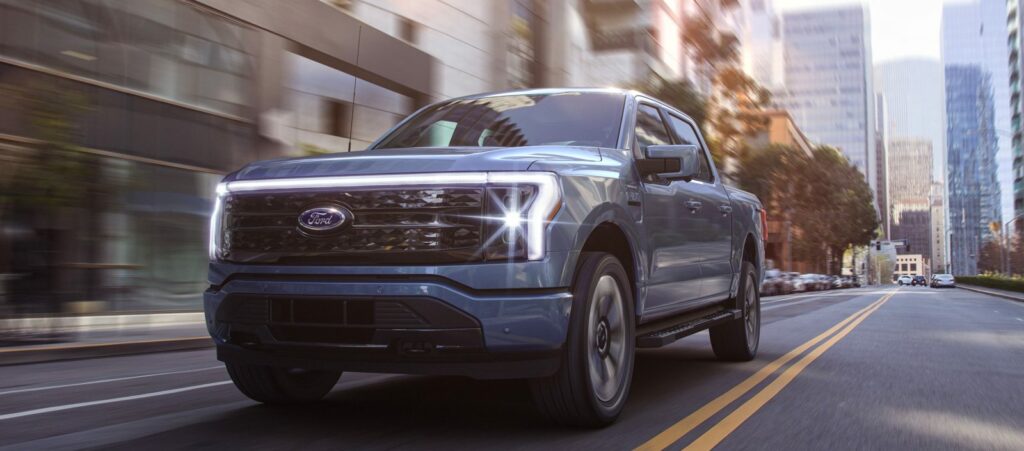
In the memo from Ford to their dealers they explicitly stated, “Examples of these negative interactions include demanding that customers who are already on the reservation list for the 22 MY [2022 model year] F-150 Lightning make additional deposits or payments. These actions are perceived as threatening customers by withholding their opportunity to convert reservations to orders.”
If you are on a Lightning reservation list and your dealer is requesting you put down an additional deposit or pay extra to retain your reservation, you DO NOT need to do that. Reference this memo when you reply to the dealer. Ford is adamant about preserving some sort of “positive” customer experience when it comes to purchasing the Lightning.
For the first time in a long time, we have an automaker standing up to their dealer body. Traditionally, automakers let their dealers do whatever they want with customers. At the end of the day MSRP does stand for “Manufacturers Suggested Retail Price”. That being said, Ford recognizes that companies like Tesla (which is currently valued at 10 times the valuation of Ford) have improved the customer experience, and Ford needs to catch up.
The memo goes on to read:
“This behavior is not allowable under Paragraph 6 of the Sales and Service Agreement. Paragraph 6(i) states that ‘The Dealer shall conduct dealership operations in a manner that will reflect favorably at all times on the reputation of the Dealer, other Company authored dealers, the Company, Company products and trademarks and trade names used or claimed by the Company or any of its subsidiaries. The Dealer shall avoid in every way any ‘bait’, deceptive, misleading confusing or illegal advertising or business practices.'”
This part of the memo is a bit humorous since Ford could easily reprimand all of their dealers for false advertising. As we all know bait and switch practices, deceptive pricing, and misleading and confusing tactics are used day in and day out at countless dealerships. That being said, Ford is threatening to not allocate F-150 Lightning inventory to dealers who behave in this way with the Lightning. That’s newsworthy as it’s the first time Ford or any major automaker has stood up to their dealers on a mass-market vehicle, and it could signal the beginning of the end for unilateral dealer control over the customer experience.
Ford is not only exhibiting control over their dealers, they’re also trying to control the re-sale market of the Lightning. From the memo, “In order to prevent the re-sale of 22MY F-150 Lightning, Ford is offering support for a No-Sale provision to be signed by the customer at the time of purchase. Dealers may add this language to existing closing forms or create a new standalone document.”
The language Ford sent to their dealers reads, “Purchaser hereby agrees that it will not sell, offer to sell, or otherwise transfer any ownership interest in the Vehicle prior to the first anniversary of the date herof. Purchaser further agrees that Seller may seek injunctive relief to prevent the transfer of title of the Vehicle or demand payment from Purchaser of all value received as consideration for the sale or transfer.”
The memo goes on to state, “Dealers should consult with their legal counsel to address any state-specific requirements.”
Not only is the legality of this language a question, the ethics of it are questionable too. How can Ford try and control what a consumer can do after allowing their dealers have been adding additional dealer markup to their vehicles for over a year now?
Ford recognizes that their customers could make a profit by buying a new 2022 F-150 Lightning and re-selling it on the used car market. They have added this language to prevent them from doing that, but they haven’t done anything to stop their dealers from adding tens of thousands of markup to their vehicles. This seems like an overstep. Instead of trying to control consumers, Ford should focus on controlling their dealers first.
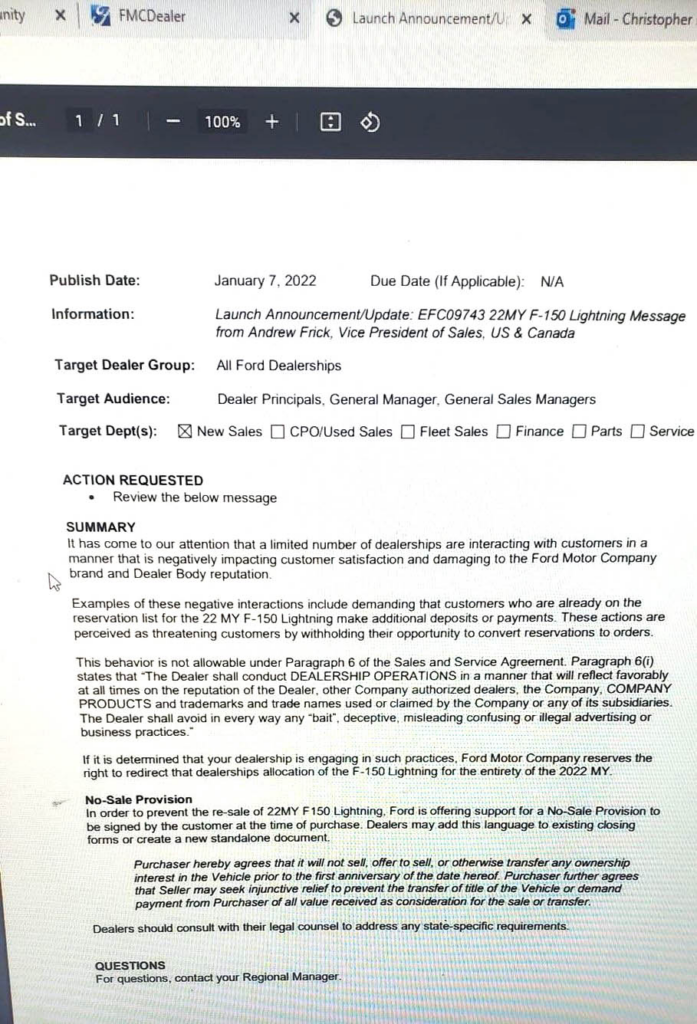

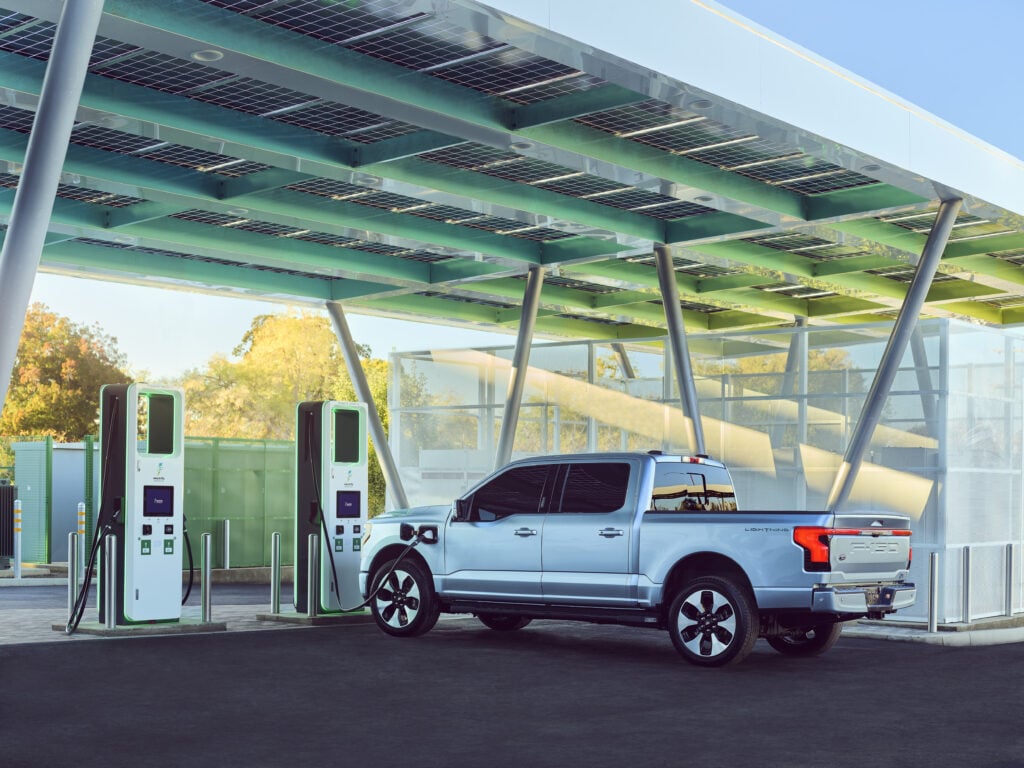
Update: Every day that we wake up to higher gas prices, the case gets stronger for EV adoption. If only EV prices weren’t sky-high. With gas at $4.50, the average American driver commuting 15,000 miles per year can easily save $150 per month or more by going electric. Check out the details below.
Charging an electric vehicle is a whole new experience, one that brings advantages and disadvantages for drivers. If you’ve been stopping at gas stations for decades, the thought of plugging in and waiting for your car to charge may be a bit too much to swallow. But over 80% of EV charging is done at home, where the cost savings are greatest. Two out of three American drivers are considering going electric for their next vehicle, and billions of dollars are being funneled into EV development and infrastructure.
EVs have a higher upfront cost than combustion vehicles, so it’s important to find ways of making up for the expense with fuel savings. Unfortunately, not all charging options are affordable. Here’s how you can save money when charging your EV in 2022.
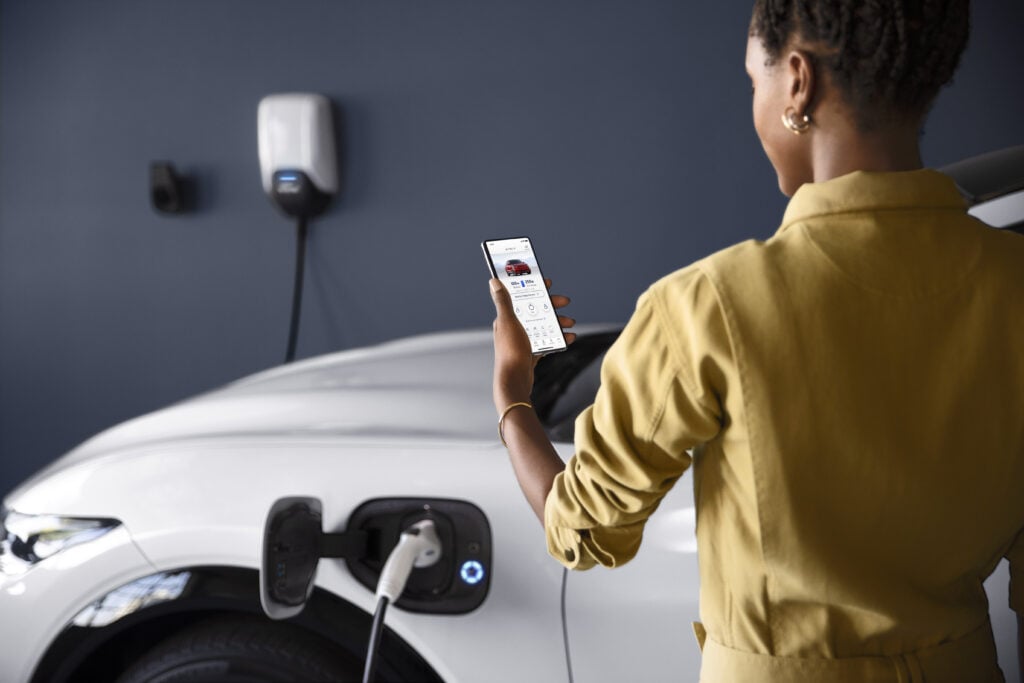
When do you usually charge your phone? While you sleep at home? Oddly enough, for most drivers, that’s exactly how their EVs are charged! Data from the US Department of Energy shows that the vast majority of electric vehicle charging is done at home. Whether you plug in to a simple 120 volt outlet in your driveway or have a more powerful 240 volt outlet in your garage, charging at home is usually the most affordable way to power up.
In the US, the average residential electricity rate is $0.14 per kilowatt-hour, however rates vary widely from one state to another. In Hawaii, the average rate is a whopping $0.34 per kWh, while it’s between $0.10 and $0.14 per kWh in more affordable energy states like Washington and Texas.
What does that all mean? Say you have a level 2 charger capable of filling up your battery from empty in about 7 hours. Plug in every evening, and wake up with a full battery every morning. What did that full ‘tank’ of electrons cost? Let’s consider a real-world example. The 2022 Tesla Model 3 has a 82 kWh battery, so at average American residential rates, at home charging a Tesla Model 3 at home costs just $11.48 for a full charge. That’s enough electrons for 358 miles of driving.
What about if the same Model 3 owner lived in California instead? At typical California residential electricity rates, the same charge would cost $18.04. Considering that a tank of gas costs over $75 today, the savings add up. But clearly, it depends on the rates you pay for power and miles driven per year to maximize savings. If you’d like to know more about average residential electricity rates in each state, you can find that information here.
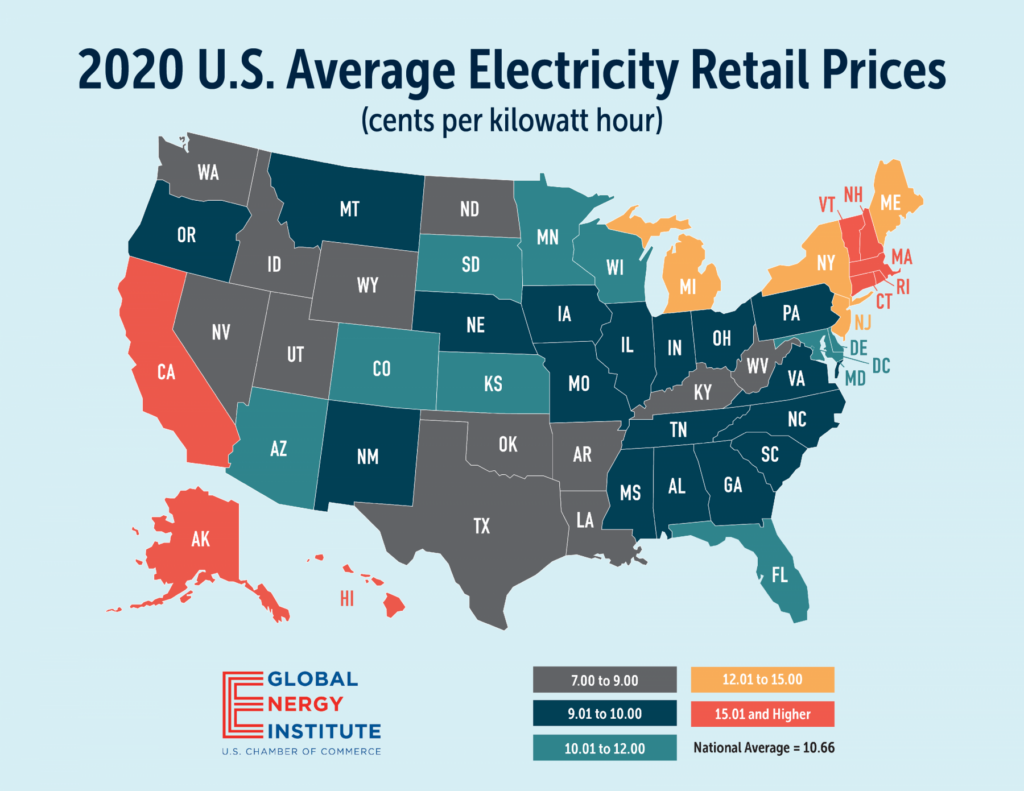
Here’s how much EV drivers from each state can expect to pay for a full charge. The examples below specifically reflect an EV with an 82 kWh battery, such as a Tesla Model 3 or Model Y. My own Hyundai IONIQ 5 has a 72.5 kWh battery.
The stark difference between home charging and public fast charging highlights the fact that going electric likely only brings savings when most charging is done at home.
| State | Residential Electricity Rate ($ per kWh) | Cost of Charging to 100% at Home (82 kWh battery) | EV Fuel Savings Compared to Filling an 18 Gallon Tank at $4.50/Gal | Annual Savings: 15,000 miles/year, 25 MPG versus 300 miles on a charge |
|---|---|---|---|---|
| Alabama | $0.14 | $11.48 | $69.52 | $2,126 |
| Alaska | $0.23 | $18.86 | $62.14 | $1,757 |
| Arizona | $0.13 | $10.66 | $70.34 | $2,167 |
| Arkansas | $0.11 | $9.02 | $71.98 | $2,249 |
| California | $0.22 | $18.04 | $62.96 | $1,798 |
| Colorado | $0.14 | $11.48 | $69.52 | $2,126 |
| Connecticut | $0.23 | $18.86 | $62.14 | $1,757 |
| Delaware | $0.14 | $11.48 | $69.52 | $2,126 |
| DC | $0.14 | $11.48 | $69.52 | $2,126 |
| Florida | $0.12 | $9.84 | $71.16 | $2,208 |
| Georgia | $0.13 | $10.66 | $70.34 | $2,167 |
| Hawaii | $0.34 | $27.88 | $53.12 | $1,306 |
| Idaho | $0.11 | $9.02 | $71.98 | $2,249 |
| Illinois | $0.14 | $11.48 | $69.52 | $2,126 |
| Indiana | $0.14 | $11.48 | $69.52 | $2,126 |
| Iowa | $0.13 | $10.66 | $70.34 | $2,167 |
| Kansas | $0.13 | $10.66 | $70.34 | $2,167 |
| Kentucky | $0.12 | $9.84 | $71.16 | $2,208 |
| Louisiana | $0.12 | $9.84 | $71.16 | $2,208 |
| Maine | $0.18 | $14.76 | $66.24 | $1,962 |
| Maryland | $0.14 | $11.48 | $69.52 | $2,126 |
| Massachusetts | $0.23 | $18.86 | $62.14 | $1,757 |
| Michigan | $0.18 | $14.76 | $66.24 | $1,962 |
| Minnesota | $0.14 | $11.48 | $69.52 | $2,126 |
| Mississippi | $0.12 | $9.84 | $71.16 | $2,208 |
| Missouri | $0.11 | $9.02 | $71.98 | $2,249 |
| Montana | $0.12 | $9.84 | $71.16 | $2,208 |
| Nebraska | $0.11 | $9.02 | $71.98 | $2,249 |
| Nevada | $0.13 | $10.66 | $70.34 | $2,167 |
| New Hampshire | $0.21 | $17.22 | $63.78 | $1,839 |
| New Jersey | $0.16 | $13.12 | $67.88 | $2,044 |
| New Mexico | $0.14 | $11.48 | $69.52 | $2,126 |
| New York | $0.21 | $17.22 | $63.78 | $1,839 |
| North Carolina | $0.12 | $9.84 | $71.16 | $2,208 |
| North Dakota | $0.12 | $9.84 | $71.16 | $2,208 |
| Ohio | $0.13 | $10.66 | $70.34 | $2,167 |
| Oklahoma | $0.13 | $10.66 | $70.34 | $2,167 |
| Oregon | $0.12 | $9.84 | $71.16 | $2,208 |
| Pennsylvania | $0.15 | $12.30 | $68.70 | $2,085 |
| Rhode Island | $0.22 | $18.04 | $62.96 | $1,798 |
| South Carolina | $0.14 | $11.48 | $69.52 | $2,126 |
| South Dakota | $0.13 | $10.66 | $70.34 | $2,167 |
| Tennessee | $0.12 | $9.84 | $71.16 | $2,208 |
| Texas | $0.13 | $10.66 | $70.34 | $2,167 |
| Utah | $0.11 | $9.02 | $71.98 | $2,249 |
| Vermont | $0.21 | $17.22 | $63.78 | $1,839 |
| Virginia | $0.13 | $10.66 | $70.34 | $2,167 |
| Washington | $0.11 | $9.02 | $71.98 | $2,249 |
| West Virginia | $0.14 | $11.48 | $69.52 | $2,126 |
| Wisconsin | $0.15 | $12.30 | $68.70 | $2,085 |
| Wyoming | $0.12 | $9.84 | $71.16 | $2,208 |

If you already have a 240 volt dryer outlet within reach, you’re all set for just about any scenario. If you don’t, you’re left with two options. If you drive less than 40 miles on most days and live within a reasonable distance of a public charger (in case you need it), you will save the most money by using the so-called ‘trickle charge’ supplied by the charger included with the car. You simply plug into a standard three-prong 120 volt wall outlet. This is called level 1 charging.
Depending on the vehicle, trickle charging typically adds 3-4 miles of charge per hour to the battery, or about 40 miles per night if you leave your car plugged in. So, how much does it cost to charge an electric car? If the above scenario describes your driving habits, you’ll just pay the same residential electricity rates that your pay to power your home.
If that’s not quite enough recharge for your daily needs, you’ll either need to make weekly visits to public fast chargers, or spend anywhere from $800 – $2000 on installation of a level 2 charger. Level 2 chargers supply more power in less time. They plug into a 240 volt outlet, the exact same kind that is used for dryers, ovens and other large appliances at home.
If you already have a conveniently located dryer outlet within reach of where you park the car, you can purchase a power splitter for as little as $300. Splitters send charge to the home appliance (such as a dryer) when needed, and then divert power to charging the car when the appliance is not in use. This saves A LOT of money versus getting electrical work done!
In summary, if you drive less than 40 miles a day, it usually makes the most sense to avoid the costly level 2 charger and stick with a regular wall outlet. If you drive significantly more, consider installing a level 2 charger or simply topping off your battery once or twice a week at a local public fast charger to avoid the expense of electrical work.
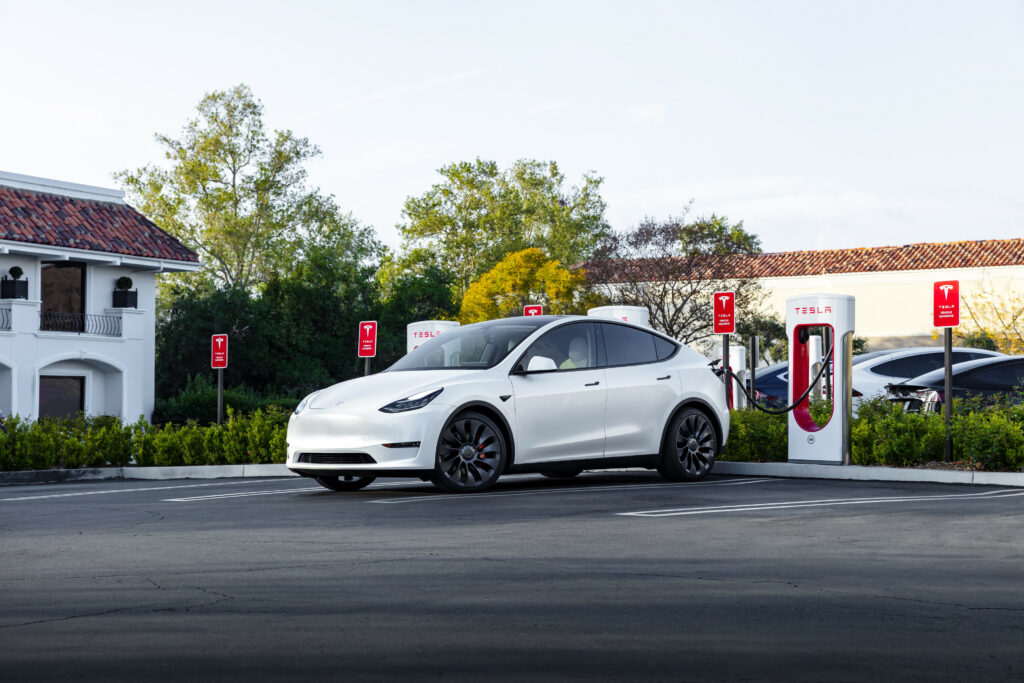
First, there’s one thing we need to make clear. Electric vehicles are not meant to be charged at public DC (direct current) fast chargers every time a charge is needed. It stresses the battery, and it costs a lot more than charging at home. For instance, fast chargers can charge a Model 3 from 10-80% in less than 20 minutes. That much energy transfer puts wear on the vehicle’s battery management system. Fast charging is great for road trips or when you’re in a pinch, but that’s all they’re meant for.
How much can you expect to pay for charging at a public DC fast charging station? Let’s consider the two largest charging networks in the nation: Tesla Superchargers and Electrify America.
As of early 2022, most Tesla Superchargers charge $0.28 per kWh of electricity. For a 2022 Tesla Model Y with a 82 kWh battery pack, that adds up to a cost of $22.96 to go 330 miles on a charge. Some Superchargers have variable pricing dependent on demand charges, as noted on Tesla’s Supercharging support page. “Certain Supercharger stations offer on-peak and off-peak rates. The rates and peak times are both displayed in the navigation application on the touchscreen.”
Depending on state and local regulations, some Tesla Superchargers charge per minute, rather than per kilowatt-hour of electricity. Tesla recently updated the rate structure for their per-minute Superchargers. With Tesla’s plug-and-charge, customers simply plug in the vehicle and the charger communicates with the car, begins charging and bills the customer’s Tesla account.
Here’s how the updated rate structure is tiered in 2022:
Source: Tesla
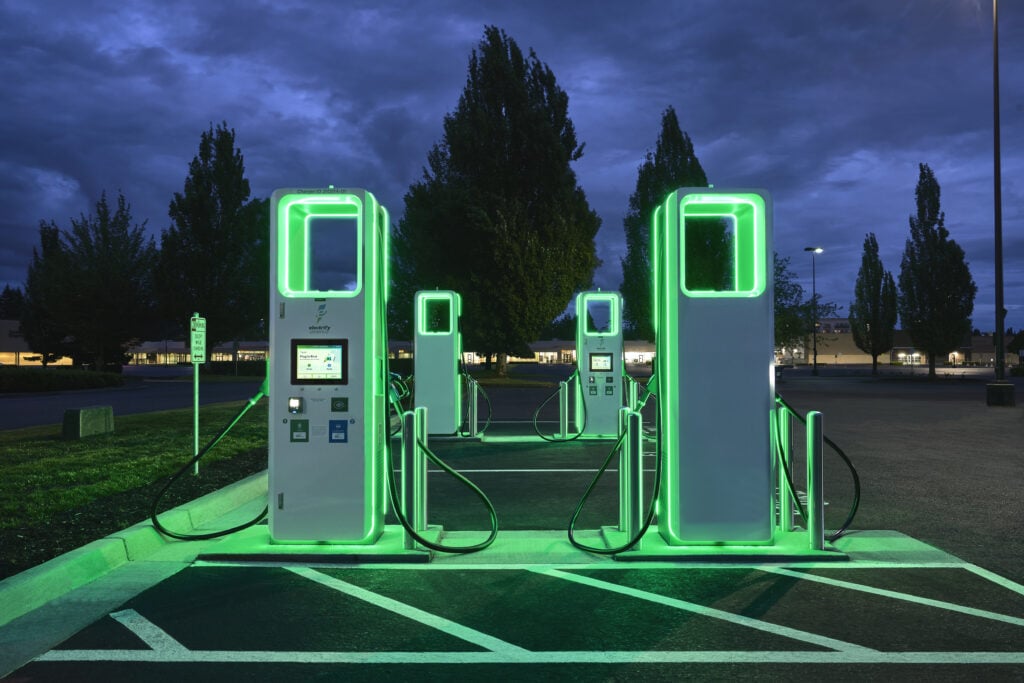
Over at Electrify America, customers can either pay $0.43 per kWh of electricity, or become a Pass+ member for just $4/month and charge at $0.31 per kWh. Having such an affordable membership plan is an interesting approach. That is to say, it almost seems like Electrify America is aiming to become a subscription that everyone with an EV will buy into for a sense of range security, even if they rarely use the network. Down the road, I’m sure prices will go up.
For a Ford Mustang Mach-E, filling up the 98 kWh battery from empty will cost $30.38 with the Pass+ membership. However, the cost jumps to $42.14 without it. Clearly, the fuel savings we often associate with going electric evaporate if charging costs are too high.
| Cost of Charging to 100% at a Tesla Supercharger | Cost of Charging to 100% at Electrify America as a Member | Cost of Charging to 100% at Electrify America as a Guest | Cost of Filling up an 18 Gallon Tank of Gas at $3.25/Gallon |
| $22.96 | $25.42 | $35.26 | $58.50 |
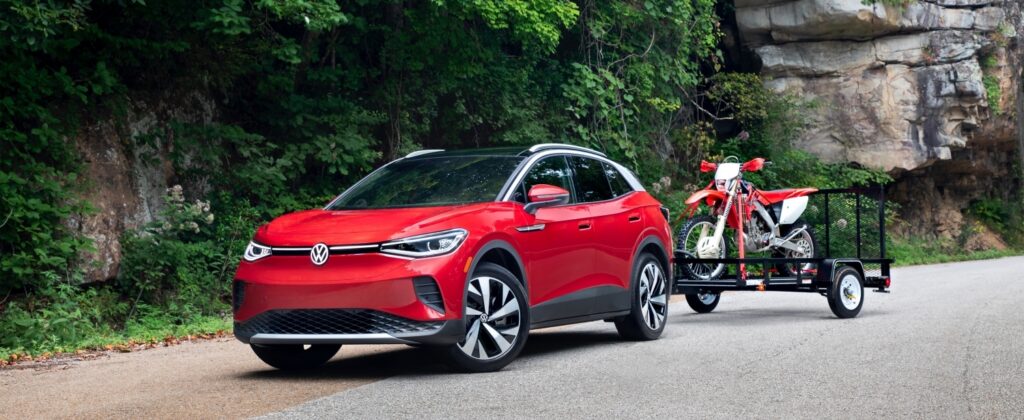
If you know someone who pulls up to Tesla Superchargers in their 2014 Model S and leaves without paying a dime, don’t expect the same perks when shopping for a 2022 Tesla. Early adopters received free supercharging ‘for life’, and there are plenty of Tesla owners out there who keep driving their high-mileage, slow-charging old Model S just for the free charging incentive.
If you’re hoping to score free charging with any of the 2022 EV models, I’ve got good news for you. Many 2022 models come with free charging at Electrify America charging stations. These new EVs all come with a free charging incentive for a limited time:
Some employers, especially large corporations and tech companies, offer free charging for EVs at dedicated parking spots. However, if your employer doesn’t offer charging, maybe you can be the one to spark the idea and help make it happen.
Prices have plummeted in recent years, and having an EV is yet another incentive to go solar. Most utility customers can participate in a net metering program that compensates homeowners for unused solar electricity contributed to the grid. If the sun is shining bright while you’re away at work, you still receive bill credits for the unused power your panels generated. The utility bill credits you’ll receive may cover the entire cost of charging your car. That’s 100% clean, free power for both your home and transportation!
How much does it cost to charge an electric car? As you can see, it depends on utility rates, incentives and if you charge at home or at public fast chargers. Fuel savings is one of the greatest benefits of switching from a combustion vehicle to an electric vehicle. As your consumer advocate, we want to make it clear that EVs don’t always save money. However, for the vast majority of American drivers, affordable electricity rates mean that at least $1,000 could be saved each year by going electric. And that doesn’t include the lower maintenance costs that most EVs have. For those who are fortunate to have a place to plug in at home or work, switching to an electric vehicle is a no-brainer.
Have any questions or comments? How are you feeling about the electrification of the auto industry? Let us know in the comments below, or check out the CarEdge Community forum at caredge.kinsta.cloud. You can also reach out to me at [email protected].

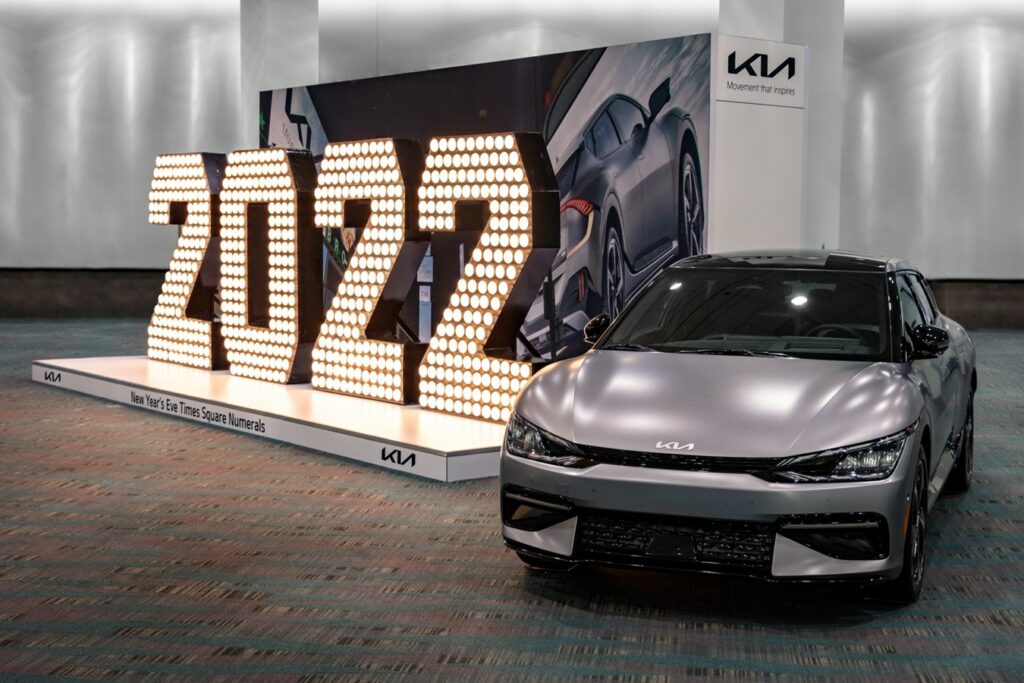
Update 1/25/22: At last, Kia has announced pricing for the 2022 EV6. The base EV6 ‘Light’ starts at $40,900, plus a destination fee of $1,215 for a total entry price of $42,115 for 2022. The EV6 does qualify for up to $7,500 in federal tax credits. Will dealer markups plague the EV6 as much as they have with the Hyundai IONIQ 5? We’ll have to wait and see. Deliveries start in the coming weeks, with the EV6 being available in all 50 states.
Here’s the full price breakdown for the 2022 Kia EV6:

If you’re a fan of the impressive range and charging figures of Hyundai’s new IONIQ 5 but don’t quite get the styling, maybe it’s sibling, the 2022 Kia EV6, is the electric auto for you. After making it’s official American debut at the 2021 LA Auto Show, this sleek electric crossover is slated to hit American roads within months. The new year brings so many more EVs to the market. Here’s what makes the Kia EV6 so distinctive among its peers in the crowded electric crossover segment.
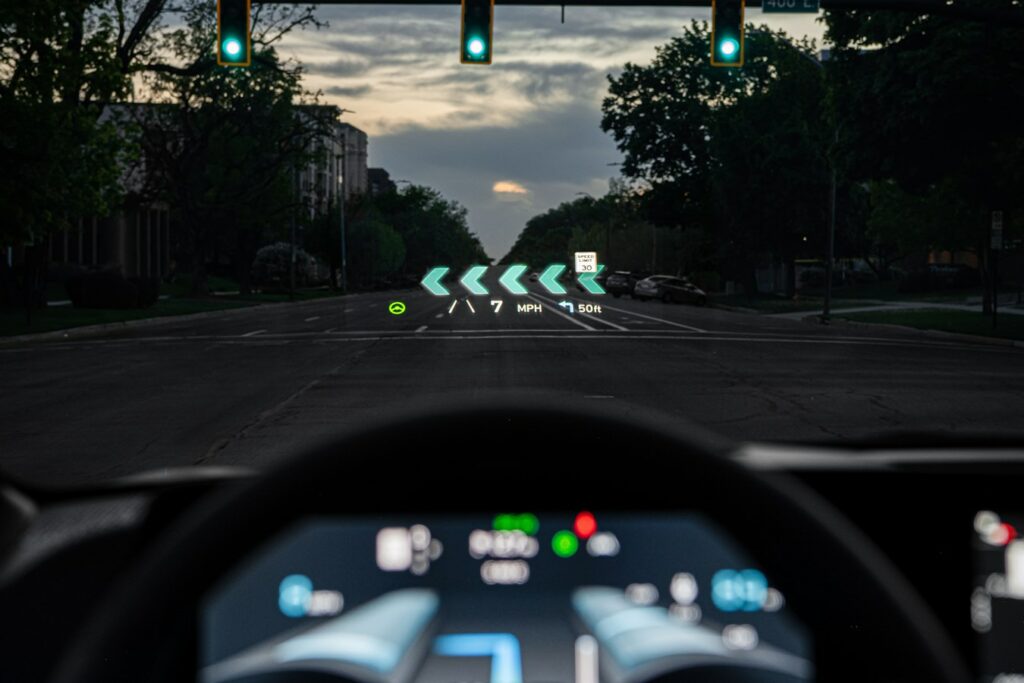
The 2022 Kia EV6 is built on the new e-GMP electric platform engineered by Kia and Hyundai to power their vehicles for the next several years. Previously, Kia EVs like the 2021 Kia eNiro were merely EVs adapted to a chassis engineered for a combustion vehicle. This all-new platform offers decent efficiency and range, and exceptional fast-charging speeds. We’re talking even better than Tesla! In early 2022, only the Porsche Taycan, Lucid Air and Hyundai’s IONIQ 5 are capable of charging at 800 volts. Soon, the EV6 will join them.
Considering that nearly all variants of the Porsche and Lucid cost over $100,000, it’s amazing how far Kia has come to be a leading innovator in the industry. For the 2022 Kia EV6, charging from 10% to 80% (adding about 200 miles of range) takes just 18 minutes. Early tests at InsideEVs show a peak charging rate of 239 kW at public level 3 DC fast chargers. Those are worthy bragging rights for Kia!

Over 80% of EV charging is done at home with level 1 or 2 chargers. Some drivers rarely ever use level 3 fast chargers. With a 240 volt dryer outlet, the EV6 can charge from empty to full in 7 hours. Without giving it much thought, that may sound like a long wait. How many hours each night does your car sit in your garage or driveway? With EVs, most drivers wake up with a full ‘tank’ of electricity every single morning. It’s just like plugging in your phone when you hit the hay. Plus, electricity is much cheaper than gasoline. With myth-busting charging speeds both at home and on the road, the Kia EV6 will help turn the tide in the battle between gasoline and electricity.
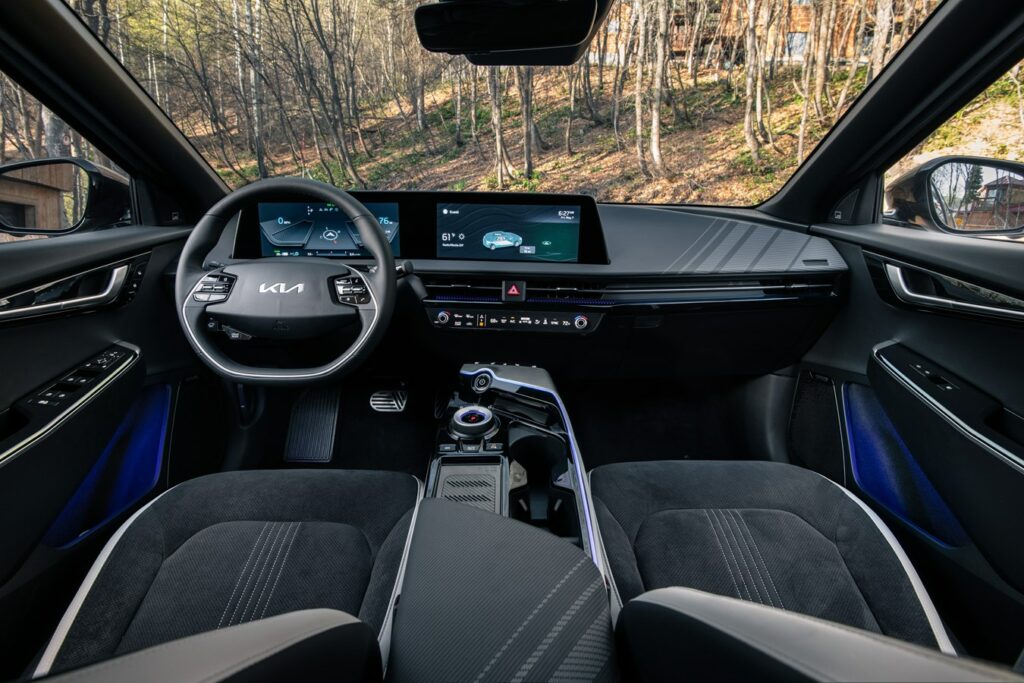
The 2022 Kia EV6 has a premium feel to it, and that’s something we’re still learning to expect from Kia. If someone told me back in 2006 that in 2022, Kia would be making one of the most sought-after electric vehicles on the market, I’d be skeptical. But stepping inside the EV6 welcomes drivers and passengers alike to a sense of spaciousness. The cabin is open and airy, yet the driver’s seat and surrounding controls remain driver-focused.
Cargo room is generous at 27.7 cubic feet, or 53.5 cu. Ft. with the rear seats down. Rear passengers have ample room, and it’s slightly more than you’d expect in a traditional crossover. However, the 61” height of the vehicle is two inches shorter than its Hyundai sibling. The Hyundai IONIQ 5 has a bit more room for rear passengers.
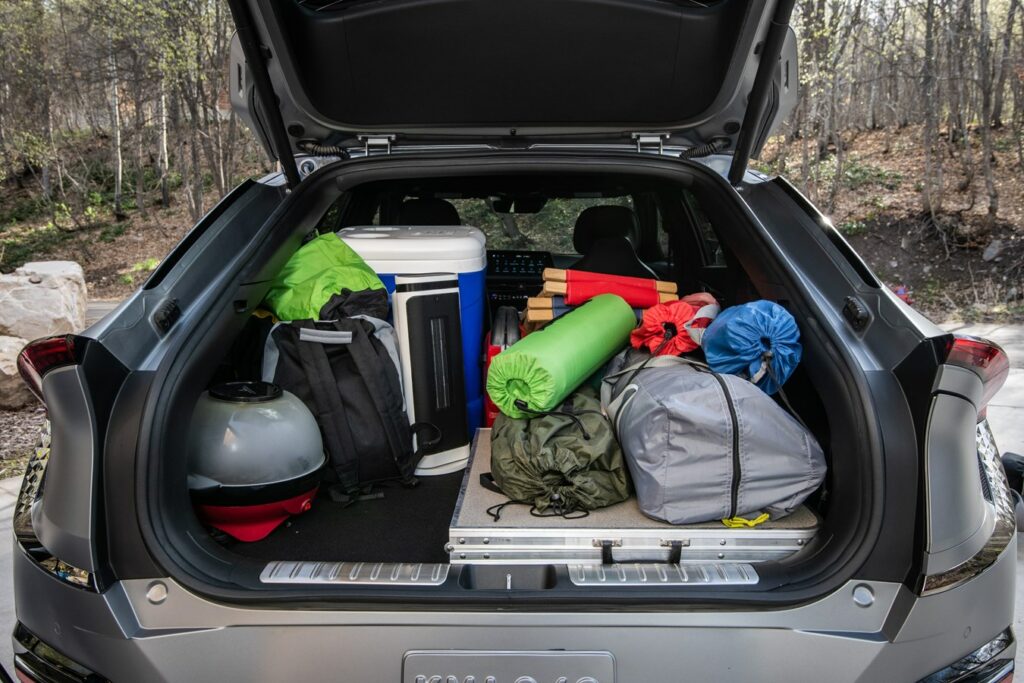
The EV6’s front dash consists of dual high-definition 12.3” screens, one for infotainment and another for the instrument cluster. Higher trims also include an augmented reality heads-up display that projects driving directions and basic info onto the windshield within the driver’s line of sight.
Kia is proud of the ambiance they’ve created in the EV6, and they highlight the intuitive user experience. “Convenience features such as keyless entry with touch-sensitive entry buttons, programmable driver profiles, relaxation seats and ergonomic design create an experience that puts the driver first. From the automatic flush handles that emerge from the car body, through to the intuitive touch-sensitive interfaces and the Augmented Reality head-up display, every journey in EV6 is designed to improve the human-machine interaction and promote a sense of well-being.”
The EV6’s 77.4 kWh lithium-ion battery is produced by SK Innovation, a leading manufacturer of batteries that also supplies Ford. With a curb weight of 4255 pounds, the 310-mile EPA rated range of the 2022 Kia EV6 is very good. That works out to 117 mpg-equivalent on a per unit of energy basis. That’s what you can expect from the rear-wheel drive version, which produces 225 horsepower (168 kW) and 258 lb-ft of torque, or 0-60 mph in 7.3 seconds. Adding an additional motor to the front increases power to 313 hp and a 0-60 time of 5.1 seconds, but range drops to 274 miles on a charge. Unlike combustion-powered vehicles, EVs get better range in city driving. The EV6 will likely get well over 300 miles of range cruising around town.
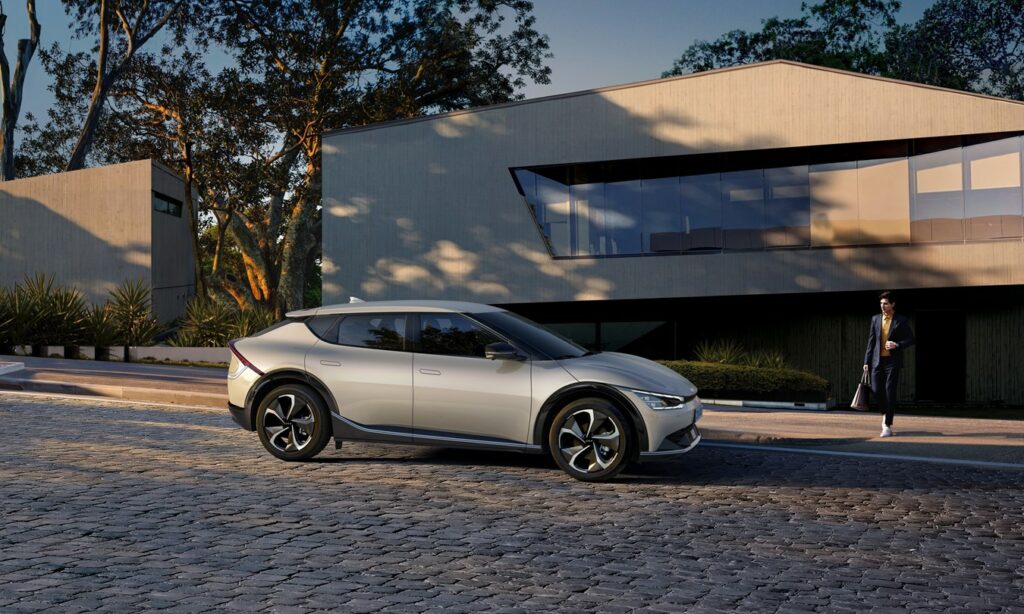
Kia has announced US pricing, and it’s just a hair above the Hyundai IONIQ 5’s MSRPs. Here’s what we know:

The Kia EV6 qualifies for the federal EV tax credit for up to $7,500, depending on tax liability. If you owe at least $7,500 in federal taxes each year, you can subtract that amount from these prices. For many buyers, the EV6 is effectively starting at just under $35,000.
Once again, as we’ve seen with the top-trim Hyundai IONIQ 5, Ford Mustang Mach-E and Volkswagen ID.4, automakers seem to be cornering buyers into a familiar shopping comparison with Tesla. Do buyers want a base-trim Tesla Model Y for about $60,000, or a fully-loaded alternative from a legacy OEM?
As of January 2022, we know that the ‘EX+’ trim options include rear-wheel drive, 310 miles of range, premium sound, heated and ventilated seats, and an onboard power generator that can power laptops, cooking devices, party lights or whatever else you need to plug in. The more premium GT line tacks on a large power sunroof, surround-view and blind-spot monitoring, heads-up display, park assist and highway drive assist, all while riding around on 20-inch wheels.

With a starting MSRP around $42,000 with destination, the 2022 EV6 will be a real contender for crossover market share. Early access owners in the UK love their cars, and many point out the advantages over the elephant in the room (Tesla). While Tesla’s Model 3 and Model Y both have an ultra-minimalist dash and plain interior, the EV6 is full of gadgets and customization. Looking at the top GT-Line trims, buyers could be cross-shopping the Model Y and EV6 for roughly the same price. One big difference: Kia EVs still qualify for the current $7,500 federal EV tax credit. Which would you prefer, the Tesla or the new Kia?
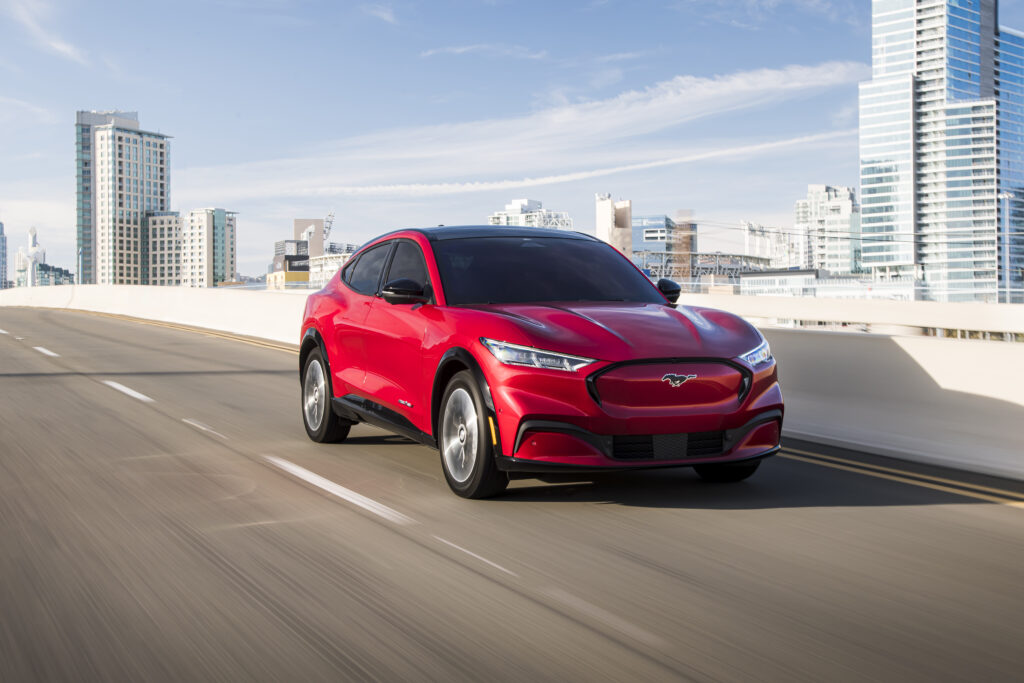
Another likely challenger is the Ford Mustang Mach-E, which sold 24,791 units in America through November 2021. The Mach-E has a few more feet of cargo capacity, but many reviewers note that the ride is quite firm. Shoppers looking for a softer ride and more leisurely handling will probably prefer the EV6. Those looking for a sporty Model Y alternative may find what they desire in the Mach-E. Range figures appear to be similar between the two, but the Kia has a clear advantage when it comes to charging time.
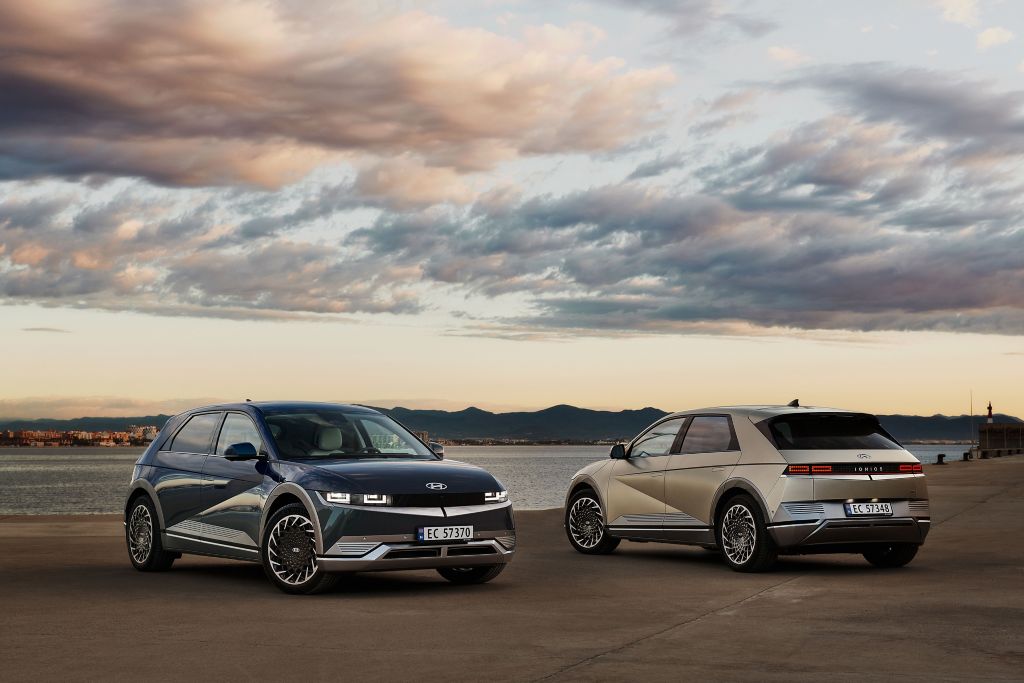
We do know a lot about the EV6’s e-GMP platform sibling, the 2022 Hyundai IONIQ 5. With a starting price of just $40,925 and roughly the same charging and range specs as what the EV6 has to offer, buyers will find that both interior and exterior styling language is the big differentiator. Those who love a retro look with a hatchback flare will instantly fall in love with the IONIQ 5. If you prefer a sleek, aggressive-looking EV that is a family-mover in disguise, the Kia may suit your needs. And then, there’s the supply factor. In the end, whichever OEM can ship more vehicles to America may win out in terms of sales.
Like a few other EVs, ‘early 2022’ is about all we know for now. Select dealerships have a pre-ordering process set up, so it might be worth a stop by your local dealership. If you’re hoping to drive an EV6 home in 2022, bear in mind the threat of additional dealer markups. If you are able to place an order, have in writing the out-the-door price your dealer will commit to. Our team of consumer advocates at CarEdge is ready to help you through this very important process. Don’t let surprise add-ons and ‘market adjustments’ keep you from getting into the driver’s seat.
With some automakers chasing Tesla and others stuck with heartless compliance EVs and struggling to get with the game, it’s refreshing to see EVs blossoming into compelling, fun-to-drive vehicles. The one big problem we see is the prohibitive price. EVs remain out of reach for many, and it doesn’t appear that the EV6 will help on that front. But then again, it doesn’t look like a ‘cheap’ car, so buyers will have to decide if it’s worth the price.
The Kia EV6 brings a new perspective to the crossover EV segment, and it’s one that consumers should definitely check out. The level of detail that the EV6 presents in both the driver-focused interior and eye-catching exterior serves as a reminder that not everything needs to aspire to Tesla. Kia is showing that our electric future is not set in stone. There’s still plenty of room for innovation as we charge ahead.
What do you prefer, the Hyundai IONIQ 5 or the Kia EV6? Let us know in the comments, or hop on over to the CarEdge Community Forum at caredge.kinsta.cloud.
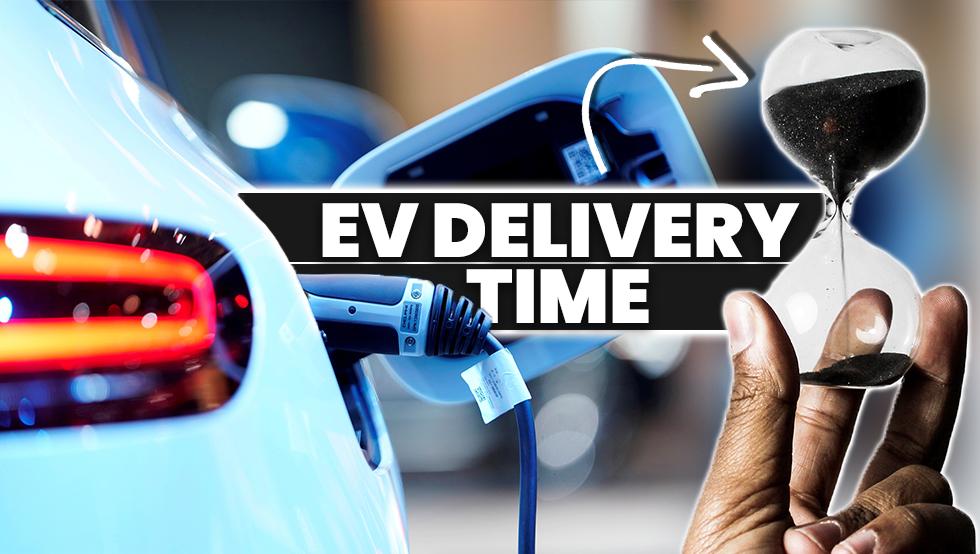

(Updated for Summer 2022)
As anyone who’s fallen head over heels for one of the many 2022 electric vehicles and clicked that ‘Order’ button can attest, just because you can order an EV in 2022 doesn’t mean you can drive it home this year. This was a problem I faced myself, but I finally broke the code and got a Hyundai IONIQ 5 at MSRP (here’s how).
Soon after I began my online car search, it became clear that if I wanted a brand-new vehicle, my options were limited by availability. To make the most of the situation, I thought I’d share what I’ve learned about the availability and estimated delivery times for EVs on the market today. Here’s what we know as we kick off the new year.
Note: These are fully-electric models that can either be ordered now or purchased at a dealership today. Many more have been announced but are not yet officially available.
| Make | Model | Class | Starting MSRP | Estimated Delivery/Lot Availability* |
|---|---|---|---|---|
| Audi | e-tron | crossover SUV | $65,900 | Available Now |
| Audi | Q4 e-tron | crossover SUV | $43,900 | Available Now |
| Audi | RS e-tron GT | sedan | $103,445 | Available Now |
| BMW | iX | SUV | $88,050 | Mid-2022 |
| BMW | i4 | sedan | $55,400 | Mid-2022 |
| Cadillac | Lyriq | SUV | $62,990 | Late-2022 |
| Chevrolet | Bolt | hatchback | $31,000 | Available Now |
| Chevrolet | Bolt EUV | crossover SUV | $33,500 | Available Now |
| Fisker | Ocean | crossover SUV | $37,499 | 2023 |
| Ford | Mustang Mach-E | crossover SUV | $43,895 | Available Now |
| Ford | F-150 Lightning | truck | $39,974 | 2023-2024 |
| GMC | Hummer EV | truck | $99,995 | Mid-to-late 2022 |
| Hyundai | IONIQ | crossover SUV | $33,245 | Available Now (Discontinued) |
| Hyundai | IONIQ 5 | crossover SUV | $43,650 | Available Now |
| Hyundai | Kona | crossover SUV | $34,000 | Available Now |
| Jaguar | I-Pace | crossover SUV | $69,900 | Available Now |
| Kia | Niro | crossover SUV | $39,990 | Available Now |
| Kia | EV6 | crossover SUV | $42,115 | Available Now |
| Lucid | Air | sedan | $77,400 | Mid-2022 |
| Mazda | MX-30 | crossover SUV | $33,470 | 2022 - CA Only |
| Mercedes | EQS | sedan | $102,310 | Available Now |
| Mercedes | EQB | SUV | ~$55,000 | Late 2022 |
| Nissan | Leaf | hatchback | $27,400 | Available Now |
| Nissan | Ariya | crossover SUV | $47,125 | Late 2022 |
| Polestar | Polestar 2 | sedan | $45,900 | Available Now |
| Porsche | Taycan | sedan | $82,700 | Available Now |
| Rivian | R1T | truck | $67,500 | 2023 |
| Rivian | R1S | SUV | $70,000 | 2023 |
| Subaru | Solterra | crossover SUV | $46,220 | Mid-to-late 2022 |
| Tesla | Model S | sedan | $94,990 | Late 2022 - 2023 |
| Tesla | Model 3 | sedan | $46,990 | Mid-to-late 2022 |
| Tesla | Model X | SUV | $104,990 | 2023 |
| Tesla | Model Y | crossover SUV | $62,990 | Late 2022 - 2023 |
| Toyota | bZ4X | crossover SUV | $43,215 | Mid-to-late 2022 |
| Volkswagen | ID.4 | crossover SUV | $40,760 | Mid-2022 |
| Volvo | XC40 Recharge | crossover SUV | $55,300 | Available Now |
| *For a vehicle ordered in May 2022, unless there's existing dealership supply. |
A few things might stand out to you on this list. Not a lot of options are available if you need a new vehicle right now. VW Group’s new EVs are available at many dealerships, although there are reports of major dealer markups. It’s quite easy to find EVs of the previous generation on dealer lots. Think Kia eNiro, Hyundai Kona EV, Nissan Leaf and the like.
The vast majority of 2022 electric vehicles are crossovers. No surprise there given the sales trends over the past decade. Honda doesn’t have a single EV arriving in the North American market until the 2024 Prologue electric SUV. That is surprising considering the popularity and good reputation of the brand. What will it take for automakers to catch up to demand? An end to the chip shortage would be a great step in the right direction. There’s also the supply versus demand factor. Ford, Rivian, Tesla and VW are all swamped with orders well into 2022, and even into 2023. All except Tesla are EV newcomers who are facing the same production ramp-up struggles that Tesla just barely survived a few years ago. We’ll update this page regularly as more information becomes available, so save it to your bookmarks!
Did we miss anything? Let us know in the comments below, or shoot an email to [email protected].